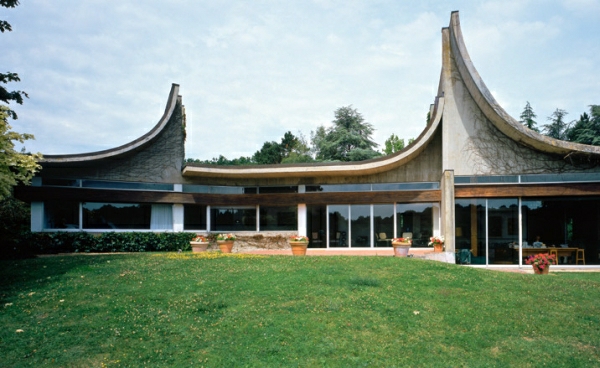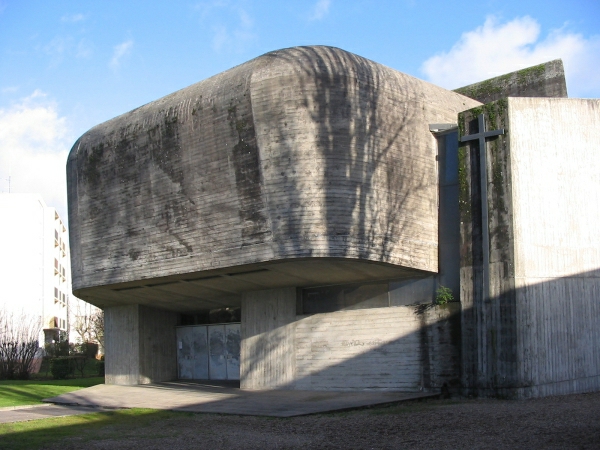Claude Parent
Cit├® de l’Architecture & du Patrimoine, P├Īrizs, 2010. janu├Īr 20 ŌĆō m├Ījus 2.
A “Claude Parent, ├®p├Łt├®szeti munka / grafikai munka” ki├Īll├Łt├Īssal a Cit├® de l’Architecture & du Patrimoine visszat├®rt ama egyedi ├®p├Łt├®szeti bemutat├│khoz, amelyeket Christian de Portzamparc 2007-ben, Vauban ├®s az Atelier de Montrouge 2008-ban megrendezett nagyszab├Īs├║ t├Īrlatai jelentettek.
Claude Parent eset├®ben az egy├®ni ki├Īll├Łt├Īs azonban nem sz┼▒ken “├®letrajzi” jelleg┼▒, tekintettel arra, hogy az ├®p├Łt├®sz milyen jelent┼æs szerepet j├Ītszott a vil├Īg, az ├®p├Łt├®szeti gondolkod├Īs modern ├Ītalak├Łt├Īs├Īban. ├ēp├Łt├®szeti tev├®kenys├®ge, amely 1956-ban kezd┼æd├Čtt, ├®s mintegy 10 ├®vvel ezel┼ætt z├Īrult le, alkot├Īsain kereszt├╝l ├®p├Łt├®szeti ikonok teremt┼æj├®v├® v├Īlt – el├®g csak megeml├Łteni a Drusch h├Īzat, a Sainte-Bernadette du Banlay templomot ├®s a Cit├® Universitaire Internationale ir├Īni K├Čzpontj├Īt. Munk├Īss├Īga olyan tal├Īlkoz├Īsi pontokat jelez, amelyek a legv├Īltozatosabb vizu├Īlis alkot├│ szem├®lyis├®gekhez kapcsolhat├│k, olyanokhoz, mint Andr├® Bloc, Ionel Schein, Nicolas Sch├Čffer, Yves Klein, Sylvia Monfort, Jean Tinguely …
Mindegyik├╝k munk├Īss├Īg├Īra a t├Čk├®letes kisug├Īrz├Īs, mondhatni a korszak-teremt├®s jellemz┼æ. Claude Parent olyan vizion├Īrius ├®p├Łt├®sz, aki egy├║ttal p├Īratlan illusztr├Ītor, valamint polemiz├Īl├│ ├®s karikaturista is a maga f├®nykor├Īban, a 60-as-70-es ├®vekben. Tev├®kenys├®g├®nek sokr├®t┼▒s├®ge saj├Ītos kih├Łv├Īs, sokszor zavar├│ t├®nyez┼æ volt kort├Īrsai sz├Īm├Īra. Tal├Īn ezzel magyar├Īzhat├│, hogy Claude Parent elismer├®se csak napjainkban ├®rkezett el, ezzel a nagyszab├Īs├║ retrospekt├Łv ki├Īll├Łt├Īssal, s azzal, hogy ŌĆō szint├®n els┼æ alkalommal ŌĆō a Cit├® de l’Architecture & du Patrimoine is neki szenteli figyelm├®t.
A szinte ut├│pisztikus, filmd├Łszletet id├®z┼æ, m├®gis urbanisztikai kvalit├Īs├║ tezauruszt grafik├Īkkal ├®s makettekkel bemutat├│ t├Īrlat annak az embernek a n├Čvekv┼æ befoly├Īsa el┼ætt tiszteleg, aki el┼æsz├Čr ak├Īr “elhanyagolhat├│” avantg├Īrd alkot├│nak t┼▒nt, de a mostani ├Čsszegz├®s az aktu├Īlis ├®p├Łt├®szeti diskurzus k├Čz├®ppontj├Ība ├Īll├Łthatja az alkot├│t. Ez a k├╝l├Čn├Čs ├®s szimbolikus magyar├Īzata annak, hogy a ki├Īll├Łt├Īs tervez┼æ-rendez┼æje mi├®rt az a Jean Nouvel, akinek karrierje Claude Parent c├®g├®n├®l kezd┼æd├Čtt.





